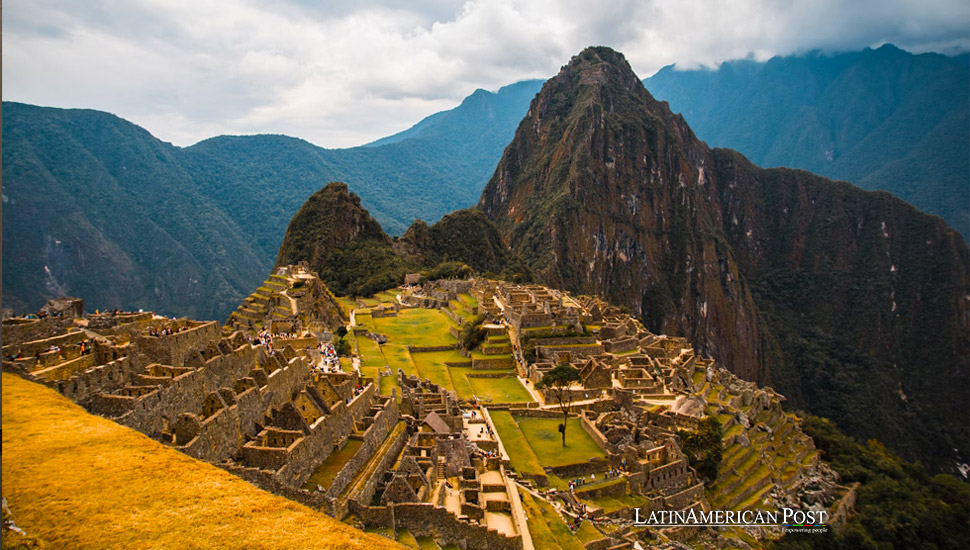Exploring Latin America’s Architectural Gems: Past Meets Present

From ancient Incan stonework to cutting-edge modern designs, Latin America’s architectural landscape is a dynamic blend of history and innovation. This feature dives into some of the most stunning architectural landmarks that define the region’s unique cultural identity.
Latin America is rich in cultural diversity, and its architectural landscape reflects centuries of transformation, influence, and innovation. From the ancient civilizations of the Incas and Mayans to the vibrant colonial-era cities and bold contemporary designs, the architecture of Latin America is as dynamic and varied as its people. In this feature, we journey across the continent to explore some of the most iconic and groundbreaking structures that blend history, artistry, and modernity.
The Enduring Legacy of Incan Ingenuity
High in the Andes Mountains of Peru sits one of the most extraordinary architectural achievements in the world: Machu Picchu. This ancient Incan city, built in the 15th century, is a testament to the ingenuity and engineering prowess of the Inca civilization. Carved out of the mountain with precision, the complex’s dry-stone construction has withstood earthquakes, harsh weather, and the passage of time.
Machu Picchu is an architectural wonder and harmonious integration of human-made structures and the surrounding natural landscape. The site’s terraces, which cascade down the steep mountainside, were designed to optimize agricultural productivity while controlling erosion. The buildings themselves, constructed from large stones fitted together without mortar, display an architectural technique known as ashlar. This method allowed the rocks to fit so closely that not even a knife blade could slide between them, which helped the city withstand the ravages of time and nature.
Beyond its technical marvels, Machu Picchu evokes a profound spiritual and cultural connection to the land. For visitors, walking among the ruins is like stepping into another world that feels distant yet strangely alive. The site’s alignment with celestial bodies suggests that it played a significant role in Incan religious practices, with temples like the Temple of the Sun reflecting the empire’s deep reverence for the sun god, Inti.
Machu Picchu’s legacy continues to influence architects and urban planners today regarding structural resilience and its sustainable environmental approach. As Latin America seeks to blend ancient wisdom with modern techniques, Machu Picchu is an inspiring example of how architecture can respect history and nature.
Preserving History in Cartagena, Colombia
Cartagena, Colombia, is a living museum of colonial architecture. Its vibrant streets are lined with brightly colored buildings, ornate balconies, and grand plazas. Founded in 1533, the city’s historic walled quarter is a stunning example of Spanish colonial design, meticulously preserved over the centuries. Walking through Cartagena’s narrow, cobblestone streets feels like traveling back when the city was a bustling hub of commerce, culture, and conquest.
The architecture of Cartagena reflects its role as a critical port city during the Spanish Empire’s expansion into the Americas. The thick walls encircling the Old Town, known as Las Murallas, were constructed in response to frequent pirate attacks in the 16th and 17th centuries. These fortifications, which stretch for miles, stand as a symbol of the city’s resilience and historical significance. Castillo San Felipe de Barajas, a fortress perched on a hill overlooking the town, is another architectural masterpiece, showcasing military design that allowed the city to fend off invaders for centuries.
Yet, beyond its defensive structures, Cartagena’s charm lies in its blend of colonial elegance and tropical vibrancy. The city’s homes are painted in a palette of warm yellows, pinks, and blues, with intricately carved wooden balconies draped in bougainvillea. Cartagena’s churches, such as the Cathedral of Cartagena and the Church of San Pedro Claver, are magnificent examples of colonial baroque architecture, with towering bell towers and richly adorned interiors.
Today, Cartagena has embraced its colonial past while infusing it with modern energy. The city’s architecture is a backdrop to its bustling nightlife, world-class restaurants, and cultural festivals, making it a must-visit destination for anyone interested in the fusion of old-world charm and contemporary Latin American life.
Mexico City’s Contemporary Architectural Revolution
While Latin America is often celebrated for its historic architecture, the region is also home to some of the most exciting contemporary designs in the world. Nowhere is this more evident than in Mexico City, a sprawling metropolis that has become a playground for visionary architects pushing the boundaries of modern design.
One of the standout structures in Mexico City is the Museo Soumaya, designed by architect Fernando Romero. This shimmering, futuristic building houses one of the largest collections of Latin American and European art with its undulating facade of thousands of hexagonal aluminum tiles. The museum’s bold design, which reflects the city’s dynamic spirit, has made it an architectural icon since its completion in 2011.
Equally impressive is the Torre Reforma, the tallest building in Mexico, standing at 807 feet. This skyscraper, designed by LBR&A Arquitectos, is a marvel of modern engineering and a model of sustainability. Its triangular shape minimizes wind resistance, and its innovative use of materials, such as recycled concrete, has earned it numerous awards for environmental design. The building’s use of energy-efficient technologies and rainwater collection systems demonstrates Mexico City’s commitment to integrating green design into its urban landscape.
In contrast to these cutting-edge structures, the Casa Estudio Luis Barragán offers a quieter, more intimate reflection of modern Mexican architecture. Designed by one of Mexico’s most famous architects, Luis Barragán, this home-turned-museum is a UNESCO World Heritage Site. Barragán’s use of light, color, and space in the home’s design showcases his mastery of blending modernist principles with traditional Mexican aesthetics.
Mexico City’s architectural revolution is not just about individual buildings but about reimagining public spaces. Projects like the revitalization of Chapultepec Park and the ongoing construction of new cultural centers reflect a broader movement toward creating spaces that are not only visually stunning but also accessible and sustainable for the city’s growing population.
Eco-Friendly Innovations in Costa Rica
As the world grapples with climate change and environmental degradation, Latin America has emerged as a leader in sustainable architecture. This is more apparent than in Costa Rica, a country known for its commitment to environmental preservation and eco-friendly innovations.
Costa Rica’s architectural landscape has embraced sustainability, focusing on green building practices that minimize environmental impact. One of the most striking examples is the El Nido House, designed by local firm Studio Saxe. Nestled in the lush jungles of the Nicoya Peninsula, the house is a model of sustainable living, blending seamlessly into its surroundings. Using natural materials like wood and stone, combined with energy-efficient technologies such as solar panels and rainwater collection systems, makes El Nido House a blueprint for eco-conscious design.
Beyond residential projects, Costa Rica has also pioneered sustainable tourism architecture. Eco-lodges like the Finca Rosa Blanca Coffee Plantation Resort in the Central Valley showcase how hospitality can integrate with nature. Built using locally sourced materials, the resort is powered by renewable energy and incorporates sustainable agricultural practices. Guests are invited to explore the property’s organic coffee farm and learn about the importance of conservation in maintaining Costa Rica’s rich biodiversity.
A national commitment to environmental stewardship drives Costa Rica’s architectural focus on sustainability. The country aims to become carbon-neutral by 2050, and this ambitious goal has inspired architects and developers to push the boundaries of green design. From urban planning projects prioritizing walkability and public transportation to eco-friendly resorts supporting local communities, Costa Rica sets a standard for sustainable architecture in Latin America and beyond.
Also read: Explore Patagonia’s Majestic Landscapes From Glaciers to Hidden Villages
Latin America’s architecture reflects the region’s cultural diversity, historical depth, and forward-thinking innovation. From the ancient wonders of Machu Picchu to the colonial charm of Cartagena, the modern marvels of Mexico City, and the sustainable designs of Costa Rica, the region offers a fascinating journey through time and style. As Latin America continues to evolve, its architecture will undoubtedly play a key role in shaping its future while honoring its past. For those seeking inspiration, beauty, and innovation, Latin America’s architectural gems are a testament to the region’s enduring creativity and spirit.





